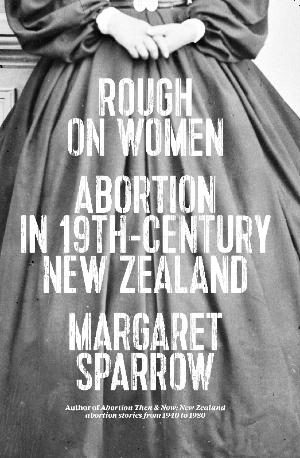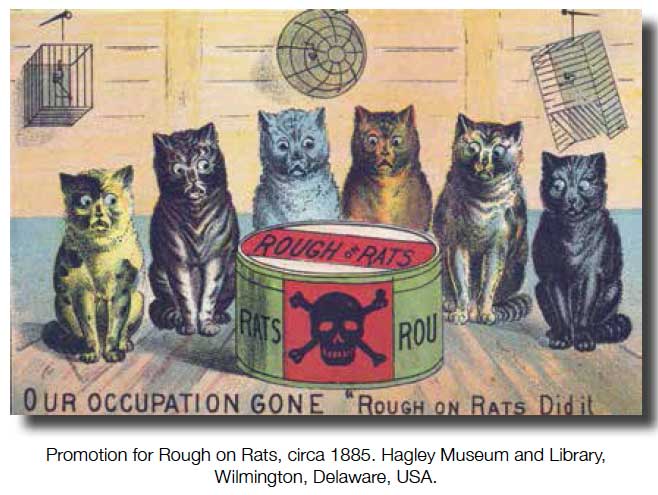ABORTION LAW REFORM ASSOCIATION OF NEW ZEALAND
1 July 2014 FOR IMMEDIATE RELEASE
Book Launch: The Untold Stories of Abortion in 19th Century New Zealand
The tragic toll of unsafe illegal abortion in 19th Century New Zealand is the focus of a powerful new book by longtime women’s health advocate Dame Margaret Sparrow that is being launched today in Wellington. (Photos of launch by Noemi.)

Dame Margaret Sparrow at the launch of ‘Rough on Women’ at Unity Books on 1 July 2014. (Unity’s Jacqui Brokenshaw, right, also spoke at the launch.)
The book Rough on Women: Abortion in 19th-Century New Zealand (Victoria University Press) tells the stories of 25 women who died at a time when choices were severely limited.
Author, journalist and pro-choice advocate, Alison McCulloch, who is launching the book at Unity Books in Wellington this evening, said Rough on Women was a sobering reminder of the heavy toll women have long paid for laws that are built around politics and morals, not health and well-being.
“The title refers to one of the most dreadful stories,” she said. “It is drawn from the name of a well-known household poison called ‘Rough on Rats’ that contained arsenic.” One woman, a 22-year-old named Essie who was 5 months pregnant took Rough on Rats, apparently to end her life. (See excerpt below.)
The president of ALRANZ (Abortion Law Reform Association of New Zealand), Dr. Morgan Healey said Dame Margaret’s book is part of the association’s on-going commitment to recording the abortion history of women in New Zealand. (Dame Margaret is also the author of Abortion Then and Now: New Zealand Abortion Stories From 1940 to 1980, also VUP.)
“If we don’t record and remember our past, we’re likely to make the same mistakes again, and
cost more women their lives,” Dr. Healey said. “As Margaret writes in her book, learning these lessons will be a legacy of all the women who died, and they will not have died in vain.”
UPDATE: Click for a link to Dame Margaret’s interview with Wallace Chapman on Radio New Zealand (6 July 2014).
UPDATE II: Click here for some photos of the launch by Unity Books.
‘Rough on Women’: An Excerpt
†Essie’s death– Rough on Rats
Deceased 22 April 1897, age 22 years
Miss Essie Mason was a servant girl employed by Mr and Mrs Melville, farmers, of Kaponga. On Tuesday, two days before she died, Essie had received three letters from Australia, where her father had gone to work in the West Australian goldfields. On Wednesday she had a visit from her brother, who lived in Opunake (a distance of 25 kilometres away) whom she had not seen for about six weeks. Either or both of these events must have brought bad news and/or lack of support from her family.
On 6 April, a fortnight before her death, she had bought a box of the widely advertised rat poison ‘Rough on Rats’ from the chemist in Kaponga, who must have assumed she was purchasing it for her employers. Mrs Melville recalled that, early on Thursday morning, she heard Essie stirring something in a cup, but did not see her doing this, nor drinking the contents. Essie died an agonising death about five hours after taking the poison.
An inquest was held but there were many unanswered questions. At the post-mortem she was found to be five months pregnant, but she had not confided in anyone who was prepared to divulge information, so there was only speculation as to the identity of the man responsible for her pregnancy. Speculation was that the father might have been the son of her employers, but this was not confirmed. Her stomach was inflamed by an irritant poison and the inquest was adjourned until the results of tests were available. Analysis confirmed the presence of arsenic.
The finding of the jury was that ‘Essie Mason came to her death on 22nd April by taking poison known as ‘Death on Rats’ (sic). The jurors attached the following three riders to the verdict:
(1) The jury are of the opinion that Mrs Melville might have administered an emetic or asked for help earlier.
(2) The jury wish to express their great dissatisfaction with William Mason for the manner in which he gave his evidence.
(3) The jury wish to refer with pleasure to the manner in which Constable worked the case and gave his evidence.
‘Rough on Rats’ was a well-known household poison containing arsenic, advertised in all the daily newspapers between 1883 and 1898: Clears out rats, mice, roaches, flies, ants, bed-bugs, beetles, insects, skunks, jack-rabbits, sparrows, gophers. At chemists and druggists.
 Twelve years earlier, in 1885, the jury at another inquest following suicide added a rider to the effect that more stringent regulations should be enforced regarding the sale of ‘Rough on Rats’. This led to a Gazette notice on 7 August 1885:
Twelve years earlier, in 1885, the jury at another inquest following suicide added a rider to the effect that more stringent regulations should be enforced regarding the sale of ‘Rough on Rats’. This led to a Gazette notice on 7 August 1885:
As Rough on Rats contains arsenic or a preparation of arsenic, it is therefore ‘poison’ within the meaning of the ‘Sale of Poisons Act 1871.’ The attention of chemists and others is called to the provisions of the regulations to be observed in the sale of poisons as there is reason to believe that these regulations are not always carried out as respects the poison above referred.
In other words, the regulations were not changed, as the existing regulations were deemed sufficient. Indeed a grocer was fined that same year for selling ‘Rough on Rats’ without restriction. Eventually, in May 1892, new regulations under the Poisons Act came into effect which provided that:
every person selling and disposing of strychnine or arsenic must obtain from the purchaser a declaration, stating
(1) precisely the Christian name and surname of the intending purchaser, at full length, together with his or her occupation and address.
(2) The exact quantity and name of the poison required.
(3) The express purpose, or purposes, for which such poison is alone intended to be used, and the places and localities where the same is to be used or deposited respectively.
The declaration, after the purchase is completed, is to be sent straight away to the Registrar of the district. The regulations do not apply to the wholesale disposal of arsenic for the cure of disease in sheep.
Advertisements for ‘Rough on Rats’, so common in the 1880s, declined after these restrictions came into force. In 1900 one disgruntled purchaser wrote:
I went yesterday to a chemist’s and asked for a shilling box of ‘Rough on Rats’. I was told that, owing to Government restrictions, I could not obtain the stuff as formerly in that simple and inexpensive way, but that I must go to a justice of the peace (now a social degradation in itself), and make a declaration before him at an additional cost of 2s 6d for a stamp and so on. All the preliminaries meant time, as well as money (3s 6d) for what my shilling should have instantly enabled me to obtain.
Essie experienced no such difficulty in obtaining her box of ‘Rough on Rats’, and there was no rider by the jury concerning the ease with which she had been able to obtain the poison.
Both of these tragedies illustrate the stigma and shame experienced by young women faced with no support from either the man responsible for the pregnancy or their families.
Click here to purchase ‘Rough on Women‘ ($40, Victoria University Press, July 2014)
************
CLICK HERE TO DONATE
TO HELP US CONTINUE OUR PRO-CHOICE WORK



